Let’s say you only have one day in the Dolomites Italy, then keep on reading. We’re covering the best time to visit, best places to stay in the Dolomites, what to eat, how to get around, and the best places to visit in Dolomites. Read until the end, where we reveal a breathtaking viewpoint you can visit especially if you’re pressed for time.
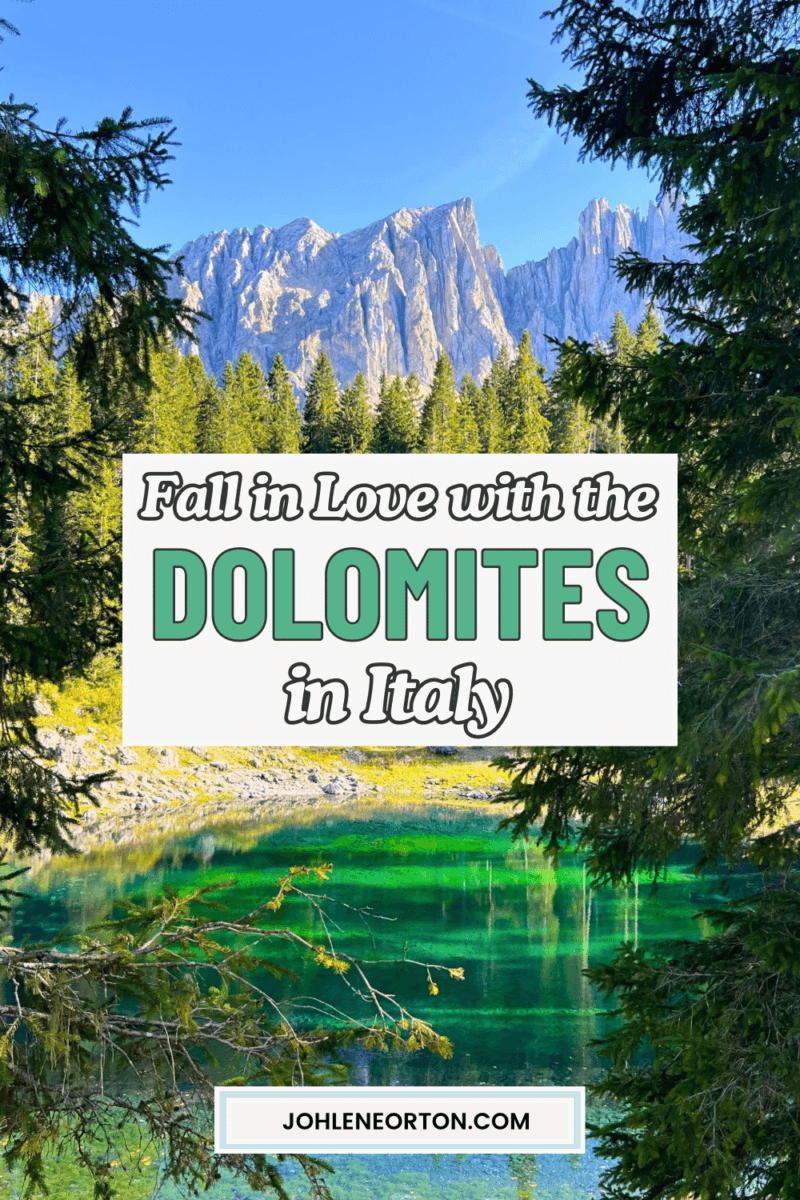
Plan the perfect day in the Dolomites Italy
TABLE OF CONTENTS
- What are the Dolomites? (Loaction, food & cultural facts)
- When is the best time to visit the Dolomites?
- What is the best way to get around?
- Where can I take a cable car?
- What are the best places to visit in Dolomites? (Most beautiful towns & lakes)
- Where is the best place to stay in the Dolomites?
- Breathtaking viewpoint you can’t miss!
What are the Dolomites?
The Dolomites are a mountain range in northern Italy, part of the Italian Alps. They’re known for their sharp peaks, alpine meadows, and beautiful lakes. The main mountains people visit include Seceda, Tre Cime di Lavaredo, Sassolungo, and the Sella Group.
The most popular towns to stay in are: Ortisei, Selva di Val Gardena, Canazei, Cortina d’Ampezzo, and San Candido. However, we stayed on the Lake Caldonazzo close to Trento, this way we were able to easily travel to the Dolomites and explore the north of Lake Garda, only an hour and a half away by car, which we will definitely talk about in a future video so make sure you subscribe so you don’t miss it! So, if you’re planning on staying for more than a day we highly recommend doing something like this. Otherwise, the best is to stay within the Dolomites to save time on the road.
People here speak a mix of Italian, German, and Ladin — an old local language. The mix comes from the region’s history; parts of it used to belong to Austria before becoming part of Italy after World War I.
The food also reflects that mix. You’ll find Italian dishes like pasta and risotto, but also Austrian-style meals like dumplings, schnitzel, and apple strudel.
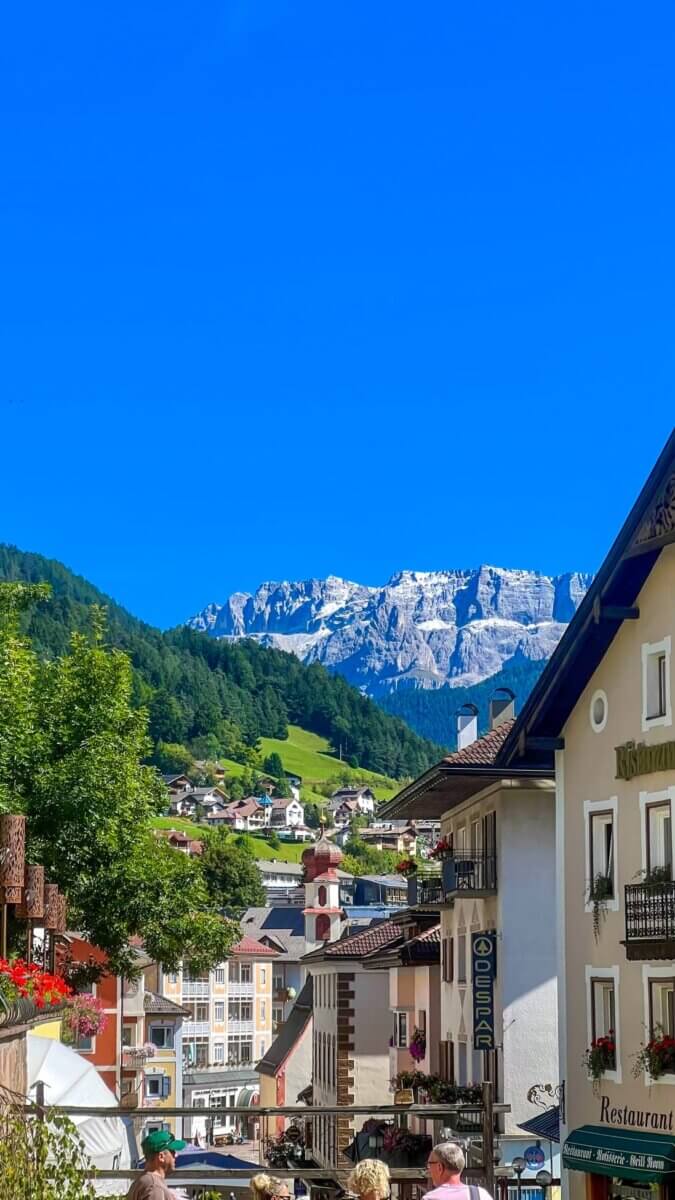
When is the best time to visit the Dolomites?
Dolomites in Summer & Early September
We went at the end of summer, towards the end of the Dolomites’ peak season (early September) which meant more crowds, but it wasn’t overwhelming. Visiting the Dolomites in September is actually a great idea if you want warm weather, clear skies, and those vibrant lake colours really popping against the bright green valleys. Hiking in the Dolomites in September is one of the best ways to explore because trails are still open, and the temperatures are mild. If you plan to visit the Dolomites in summer, expect lush scenery, blue skies, and plenty of outdoor activities like hiking, cycling, or even swimming in alpine lakes.
Dolomites in the Fall
The Dolomites in the Fall are absolutely stunning. Golden, orange, and red trees cover the valleys, especially around Val di Funes near the Chiesa di Santa Maddalena. It’s quieter than summer, and while some mountain huts close for the season, it’s still a great time to explore with fewer crowds. Hiking trails are peaceful, though public transport is limited, so having a car is a big plus. And of course, don’t miss the chance to try a warm slice of apple strudel while you’re here.
Dolomites in Winter – Skiing & Snow Season
In winter, the snow-covered peaks make the Dolomites perfect for skiing. The region transforms into a world-class winter sports destination with charming mountain villages and cozy lodges. Dolomites skiing is a must if you visit during this time (just make sure your car is ready for snowy conditions). It’s also the season for hearty comfort foods like dumplings, creamy polenta, and smoked ham, best enjoyed after a day on the slopes.
Dolomites in Spring
In spring, snowy peaks sit above green valleys and blooming meadows. Waterfalls are at their strongest as the ice melts, creating dramatic views throughout the region. The crowds are smaller after ski season, making it a peaceful time to explore. Spring in the Dolomites is perfect if you want to see nature waking up again without the busyness of summer.
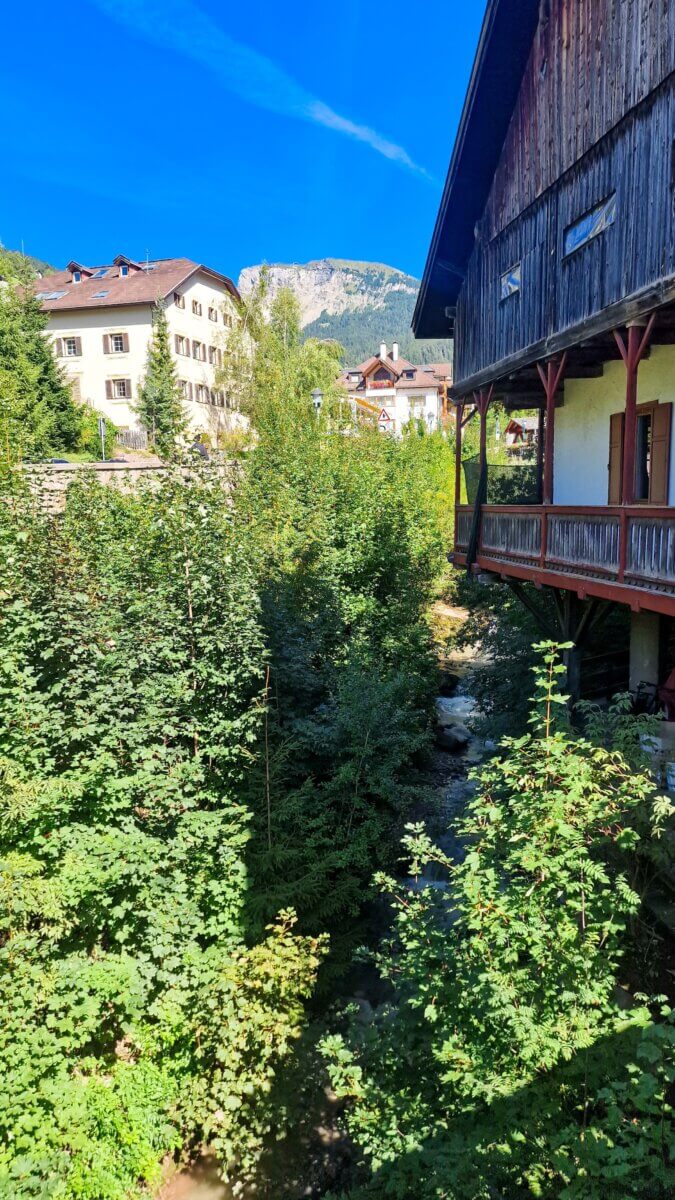
What is the best way to get around?
We got around by car and found it to be the best option for several reasons: we wanted to take day trips from where we were based. It’s flexible, lets you see more, including places public transport can’t reach.
That said, you can also get around the Dolomites by public transport, especially by bus (Dolomitibus), which is a good option if you don’t have a car or are traveling solo. Some say parking is tricky in high season, but we went during the end of peak season and had no issues, so having a car (or renting one) is definitely worth it.
Where can I take a cable car?
Marmolada cable car — Malga Ciapela to Punta Rocca
Where: Valley station at Malga Ciapela, Rocca Pietore.
What you see: Glacier views, a 360 degree panorama of the Dolomites and Punta Penia (the highest peak in the Dolomites). There are terraces and a small museum about the Great War near the top. The ride goes through intermediate stations Serauta and Punta Rocca.
Check their website for the current ticket price and seasonal opening dates.
Telecabine Gondelbahn Forcella del Sassolungo (Viral Coffin Gondola)
The Telecabina Forcella del Sassolungo, known as the “coffin gondola,” is a small two-person lift near Passo Sella. It climbs to the Toni Demetz Hut at about 2,685 meters. The narrow upright cabins make the ride feel thrilling and unusual. Boarding is exciting because the cabins don’t stop moving. Staff help you jump in safely as it passes. The short ride offers amazing views of the Dolomites. It’s one of the area’s most unique and viral attractions.
A round trip costs around €22 and operates mainly during summer.
Seceda cable car — Ortisei → Furnes → Seceda
Where: Take the Ortisei-Furnes gondola from Ortisei, then change to the Furnes–Seceda cable car.
What you see: The famous Seceda ridge, wide alpine meadows, and sweeping views across Val Gardena and the Odle/Geisler peaks. Great for easy to moderate hikes, photos, and sunset or sunrise shots.
Typical cost: There are single and return options; seasonal timetables apply. Tickets are sold at the station and online. For exact prices and opening days check the Seceda ticket page.
Seiser Alm (Alpe di Siusi) gondola — Ortisei (St. Ulrich) to Alpe di Siusi
Where: Valley station in Ortisei/St Ulrich up to the Alpe di Siusi plateau.
What you see: Europe’s largest high-altitude meadow, gentle walking trails, stunning views of the Sciliar/Schlern and Odle ranges. This is perfect for relaxed hiking and photography.
Typical cost: Single and round trip fares are available. Summer 2025 prices listed on the Seiser Alm site show one-way and round-trip options and family deals.
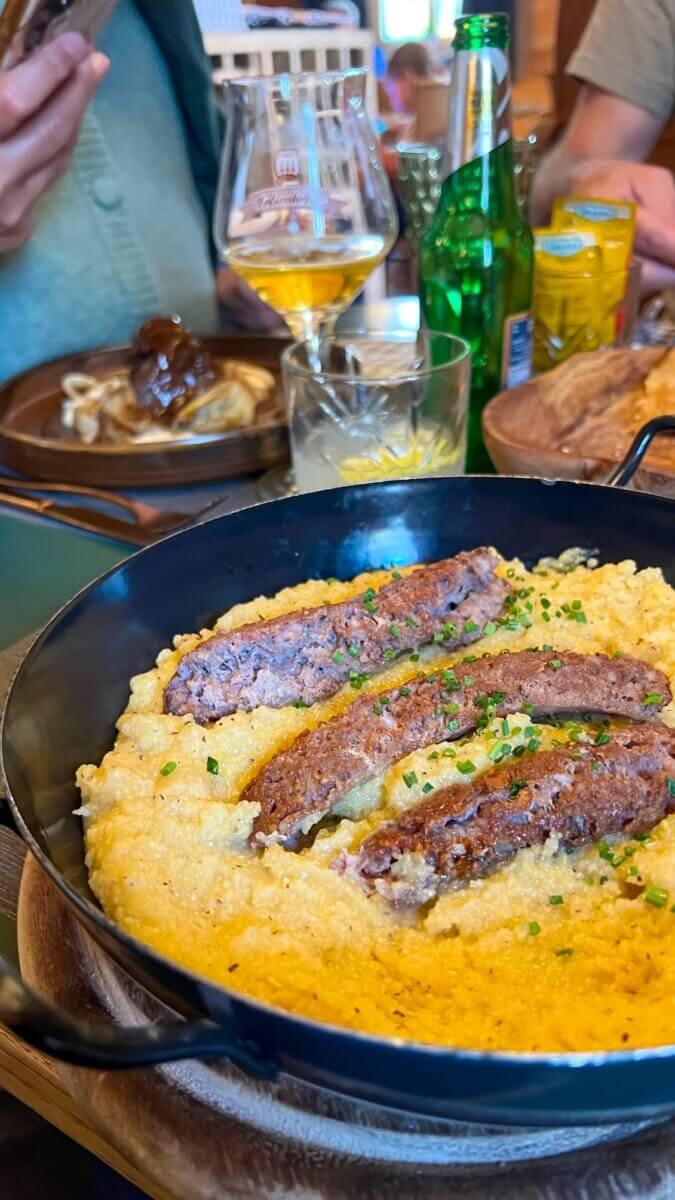
What are the best places to visit in Dolomites?
Ortisei Italy
Since we only have one day, we recommend narrowing it down to one town, Ortisei. One of the biggest and most popular towns in the Dolomites, especially in the Val Gardena area. It’s known for its colorful alpine houses with very unique architecture and features, and amazing mountain views. Ortisei is also one of the most convenient bases in the Dolomites, with good hotels, restaurants, and bus connections to nearby villages.
We loved this town for how clean and neat it was, with the beautiful mountains in the background (it felt like stepping into a storybook). We visited a charming shop called Comploj, which sells Christmas decorations (we couldn’t resist getting one for our Christmas tree!), manger figurines, wooden trinkets, and collector’s items. You definitely have to stop by, as Val Gardena, especially towns like Ortisei, is famous for its hand-carved wooden figurines and artwork. The area is known around the world for its woodcarving.
What to eat in Ortisei
If you want to enjoy a coffee or hot chocolate, we recommend Café Corso. It’s a beautiful blue house with a cozy patio overlooking a small square with a fountain and the church. We tried the hot chocolate, which comes in flavors like orange or salted caramel, and the Kaiserschmarrn with berry jam: shredded pancakes with raisins, sprinkled with powdered sugar (a classic dessert in Austria, Germany, and Hungary).
For lunch, we went to Wirtshaus Osteria Traube right in the square. They serve traditional homemade Italian and German/Austrian dishes. We tried the spinach and cottage cheese ravioli, which was delicious, the storo polenta with sausage (the polenta was incredible, easily the best we’ve ever had, there’s also a vegetarian version with mushrooms), the beef cheek with celery cream and roasted endive, which was very good though a bit small in portion, and the chicken schnitzel, also very tasty.
If you have a car (or are renting one), we also suggest driving through Selva di Val Gardena, Canazei, and Pozza di Fassa. They all have the same charming vibe, with wooden alpine houses full of colorful flower boxes on the windows and balconies.
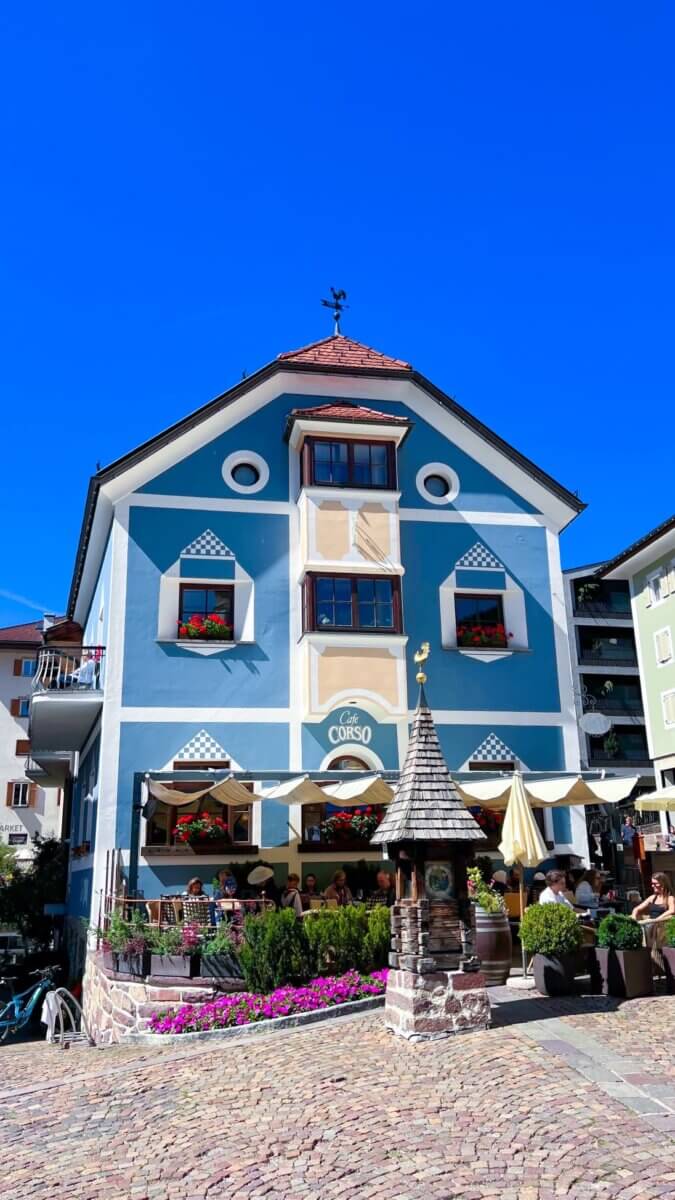
Most beautiful lakes to visit in the Dolomites
There are many beautiful lakes in the Dolomites, like Lago di Braies, Lago di Misurina, Lago di Sorapis, and Lago di Dobbiaco. Most of them are easy to reach by car, but the two we highly recommend are Lago di Sorapis and Lago di Carezza.
Sorapis is stunning but requires a two-hour hike each way, so if you prefer spending the day hiking, it’s a great option.
Lago di Carezza (or Karersee)
But since we only had one day in the Dolomites, Carezza (also called Karersee) was the best choice. It’s unique, incredibly beautiful, and very easy to reach by car. Just make sure you go on a sunny day with clear skies, or the colour of the water won’t be the same.
There’s a paid parking area right next to the lake, public bathrooms, and a small snack bar just above the parking lot. Once you’ve parked, you walk through a tunnel and come out the other side immediately greeted with stunning views of the mountains. A short trail goes all the way around the lake, so you can enjoy it from different viewpoints. The bright turquoise, crystal-clear water with mountain peaks reflected in the background makes it one of the most gorgeous and memorable spots in the Dolomites in our opinion.
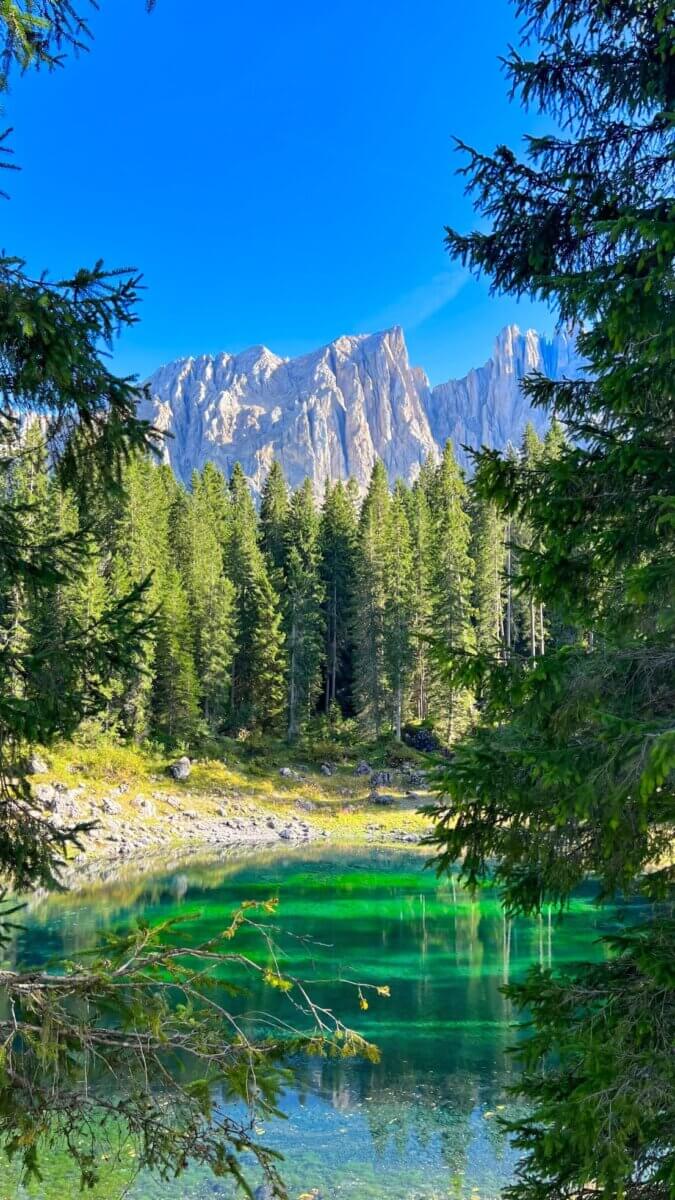
Where is the best place to stay in the Dolomites?
Berghotel Dolomites – Berghotel Sexten is a classic mountain hotel surrounded by dramatic peaks and hiking trails. It’s cosy, relaxed, and all about being close to nature while still enjoying great food and a warm spa at the end of the day. This is a great pick if you love hiking or skiing and want a more down-to-earth, authentic mountain experience.
Hotel Rosa Alpina Dolomites – Rosa Alpina is pure elegance in the mountains. It’s an Aman property, so everything feels calm, minimal, and beautifully designed. Expect fine dining, a peaceful spa, and a quiet mountain village atmosphere. It’s perfect if you want a refined, romantic stay in the Dolomites with world-class comfort.
Excelsior Dolomites life resort – This luxury mountain resort sits right in the heart of the Dolomites, with ski-in ski-out access in winter and hiking trails starting from the door in summer. It’s known for its huge spa with rooftop pools overlooking the mountains, amazing food, and a mix of relaxation and adventure. It’s the best choice if you want both luxury and nature in one place.
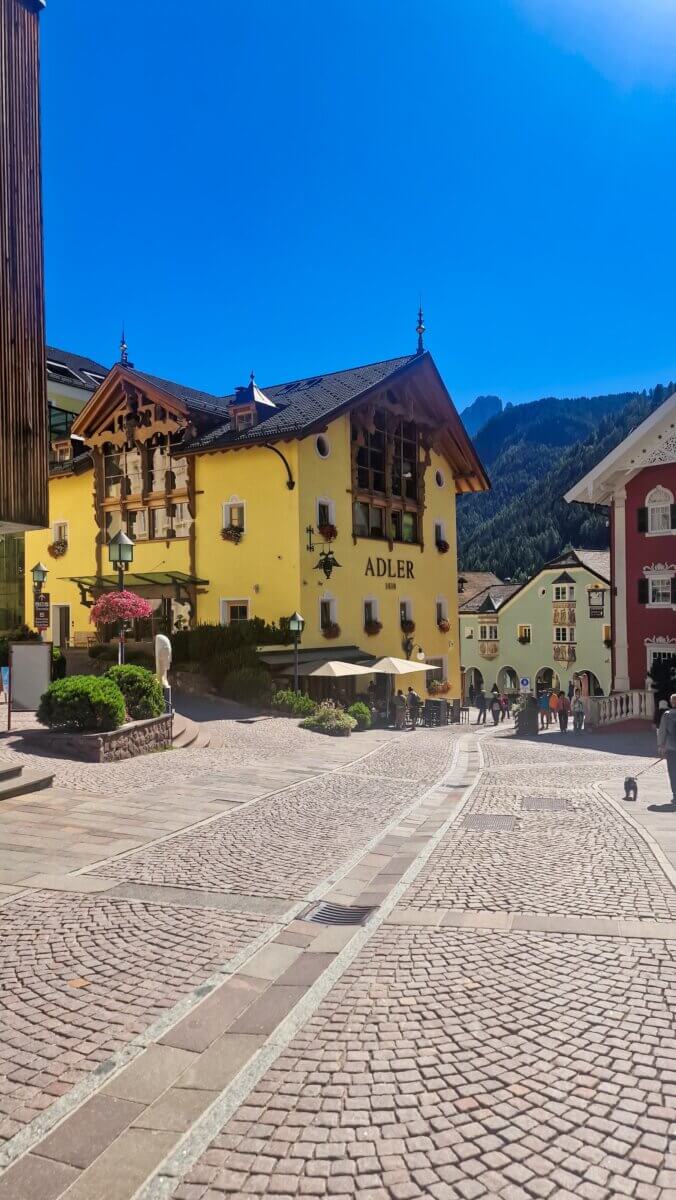
Breathtaking viewpoint you can’t miss!
On our way from Ortisei to Lake Carezza, we came across a viewpoint called Punto Panoramico Passo Sella with amazing views of Sassolungo and the Sella Towers. It’s a great stop if you’re short on time or on a budget and can’t take a cable car but still want to enjoy the views.
Sing up for our weekly newsletter and get a FREE Packing List Template!
Other related topics you might be interested in…
Find out everything you need to know about travelling in Rome with our post “Rome City Centre in a Day: Everything You Need To Know!”. This is a guide to must-see sights, top attractions, and tips for making the most of your time in the Eternal City. Whether you’re arriving from Civitavecchia to Rome on a cruise stop or exploring as part of a longer Rome itinerary, this Rome travel guide has everything you need.
Leave a Reply